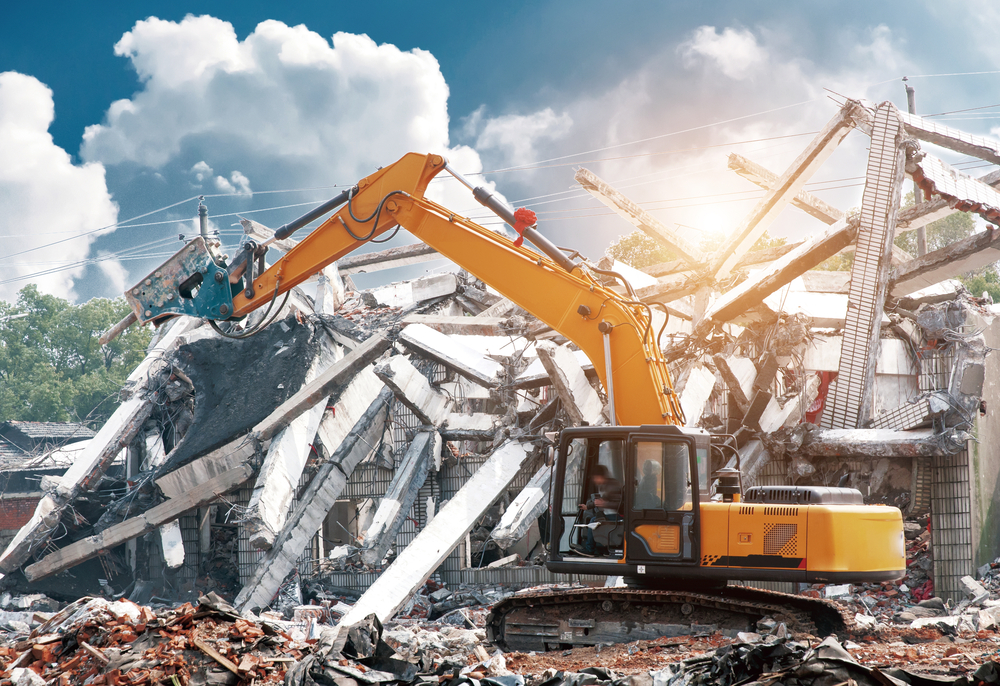The densely populated regions where demolition issues require creative strategies and careful planning. The multi-faceted nature of the demolition process demands that it be tackled by a variety of professionals and decision-makers.
Urban demolition must adhere to rigorous safety standards. Equipment and worker training must be available as well as emergency response plans.
Security Protocols
The process of demolition could pose a risk. Workers are often injured fall from heights or are trapped in collapsed structures. Work-related illness are a common result of exposure to deadly substances like asbestos, lead and polychlorinated biphenyls.
Training, adherence of safety rules and access to Personal protective equipment is essential to reduce the risk. In addition, a comprehensive study of the site needs to be carried out to identify any potential environmental hazards before demolition begins.
Once the demolition team has secured the permits needed, they can begin tearing away the building. The demolition portion is usually the safest and most efficient phase of the project However, it needs to be carried out with attention by a competent team.
Noisy Vibration Management
The demolition of buildings is essential to the process of urban renewal however, it has ecological impacts that have to be controlled. These include air and noise pollution, and preservation considerations.
While it may seem counterintuitive but the decision to use machines and equipment has significant impact on the demolition process, and the environmental footprint it leaves in its wake. Perfect Contracting uses innovative technologies for reducing the impact of concrete removal applications and surface preparation.
As a result, there is less sound pollution, lower CO2 emissions, and improved efficiency compared to hand-held breakers with pneumatics. Contractors can work safely within strict limit of sound while still meeting their goals for sustainability.

Dust Control Measures
Each demolition venture must contain ways to eliminate dust. This includes surface wetting using water sprays, as well as regular cleaning and sweeping practices. A atomized system is also increasing in popularity because it can provide greater dust reduction at a fraction the price of the larger, fixed dust control systems.
Construction materials also contain metals like cadmium and chromium as well as copper, iron, lead, and so on. The presence of these metallics within the samples of demolition confirms that lead-based residential paint is the primary reason for their release. The results suggest that the need for neighbor notification and dust reduction are required when addressing single-family housing demolition in communities. The distance effect on the fall of lead dust was altered by the direction of wind.
Limited Workspace Solutions
Urban demolition demands a degree of precision that prevents accidental damage to the surrounding infrastructure like water, gas, and electricity lines. The modern machinery for demolition has been designed with this requirement in mind. The emphasis on precision enables companies to finish demolition projects and minimize the effect they can have on adjacent areas.
It could be simple for the decision-makers to believe that “5 in 5” is a successful strategy to reduce the overall rate of vacant homes in Buffalo. But a statistical analysis of changepoints and Granger causality testing showed that local vacancy trends did not correspond with an increase in demolition activity. In fact, the decline in vacant homes was probably related to other elements that include the reopening of local establishments and the gentrification process.
The Impact of Infrastructure
Urban demolition plays a major aspect in urban renewal and development. It eliminates decaying or damaged buildings and opens the way to contemporary construction, which meets specifications and demands. However cong ty pha do nha tai quan Binh Tan, it must be handled with care to prevent damaging the urban neighborhoods and damaging the environment.
Alongside adhering to strict security protocols Urban demolition companies must adhere to various regulations. The ability to meet these regulations effectively is a huge challenge and requires expertise in zoning regulations in addition to environmental and security protocols. Perfect Contracting has extensive experience dealing with this complex regulatory environment.
Structural Stability
An extensive risk assessment must be done prior to any demolition work in order to ensure load-bearing structures or critical elements aren’t susceptible to falling. If these issues are not treated in a timely manner, may create unexpected delays and costly repairs.
Sustainable construction is built on saving valuable materials and reusing building material. They can greatly reduce the amount of demolition debris and help contribute to a more sustainable economic system.
Employers are looking for proof that you’re knowledgeable and able to comply with the laws of your state and nation. Inquiring about the time when your work plans required a change because of unexpected circumstances helps them examine your capability to be flexible and adapt to changing conditions.
Regulatory Compliance
It is vital to be compliant with all rules and laws in force. It is essential to secure all permits required and take mitigation strategies.
Regulation compliance is also about maintaining open lines of communication to local officials as well as property owners as well as residents, to discuss any issues that arise during the construction. Documentation of all aspects of an application for a permit is essential to ensure that legally required requirements are met.
The destruction of structures may also need long-term residents to be relocated for relocation, like residents who are squatters. It’s a daunting work. Also, many construction sites will require disconnected sewer and water services. This includes hazardous garbage disposal. This is where adopting circular economy principles comes in and material salvage, recycling, and reuse can help to reduce waste.
Public Perception
As we strive towards sustainable development, various sectors including demolition and construction are being scrutinized for their environmental impact. Construction practices that are traditional release harmful dust particles in the air, disrupt communities and ecosystems with loud disruptions and produce huge quantities of waste, which can be disposed into the landfills.
In highly populated areas, huge-scale demolitions may require residents to relocate. Authorities in the local area should ensure that residents with long-term plans are aware about the demolition process.
Furthermore, looking at the property’s reuse possibilities can reduce the likelihood of neighborhood property values declining for neighboring properties. Making sure that residents have accessibility to housing that is affordable is yet another aspect to take into consideration. We examined standardized residual covariances from the structure of public perception for planning equation model showed no significant impact on residents’ self-reported mental as well as physical well-being.





